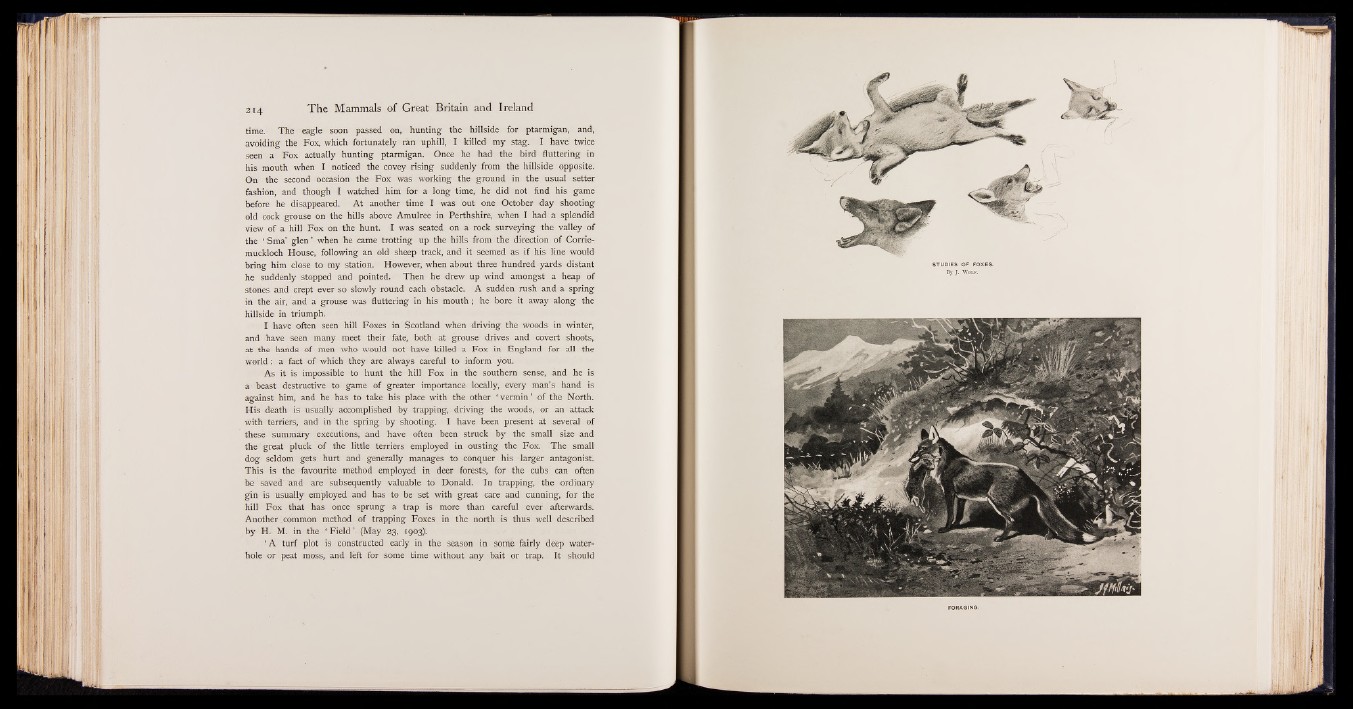
214 The Mammals of Great Britain and Ireland
time. The eagle soon passed on, hunting the hillside for ptarmigan, and,
avoiding the Fox, which fortunately ran uphill, I killed my stag. I have twice
seen a Fox actually hunting ptarmigan. Once he had the bird fluttering in
his mouth when I noticed the covey rising suddenly from the hillside opposite.
On the second occasion the Fox was working the ground in the usual setter
fashion, and though I watched him for a long time, he did not find his game
before he disappeared. At another time I was out one October day shooting
old cock grouse on the hills above Amulree in Perthshire, when I had a splendid
view of a hill Fox on the hunt. I was seated on a rock surveying the valley of
the ‘ Sma’ glen ’ when he came trotting up the hills from the direction of Corrie-
muckloch House, following an old sheep track, and it seemed as if his line would
bring him close to my station. However, when about three hundred yards distant
he suddenly stopped and pointed. Then he drew up wind amongst a heap of
stones and crept ever so slowly round each obstacle. A sudden rush and a spring
in the air, and a grouse was fluttering in his mouth; he bore it away along the
hillside in triumph.
I have often seen hill Foxes in Scotland when driving the woods in winter,
and have seen many meet their fate, both at grouse drives and covert shoots,
at the hands of men who would not have killed a Fox in England for all the
world: a fact of which they are always careful to inform you.
As it is impossible to hunt the hill Fox in the southern sense, and he is
a beast destructive to game of greater importance locally, every man’s hand is
against him, and he has to take his place with the other ‘ vermin’ of the North.
His death is usually accomplished by trapping, driving the woods, or an attack
with terriers, and in the spring by shooting. I have been present at several of
these summary executions, and have often been struck by the small size and
the great pluck of the little terriers employed in ousting the Fox. The small
dog seldom gets hurt and generally manages to conquer his larger antagonist.
This is the favourite method employed in deer forests, for the cubs can often
be saved and are subsequently valuable to Donald. In trapping, the ordinary
gin is usually employed and has to be set with great care and cunning, for the
hill Fox that has once sprung a trap is more than careful ever afterwards.
Another common method of trapping Foxes in the north is thus well described
by H. M. in the 4 Field ’ (May 23, 1903)1
4 A turf plot is constructed early in the season in sonie fairly deep water-
hole or peat moss, and left for some time without any bait or trap. It should